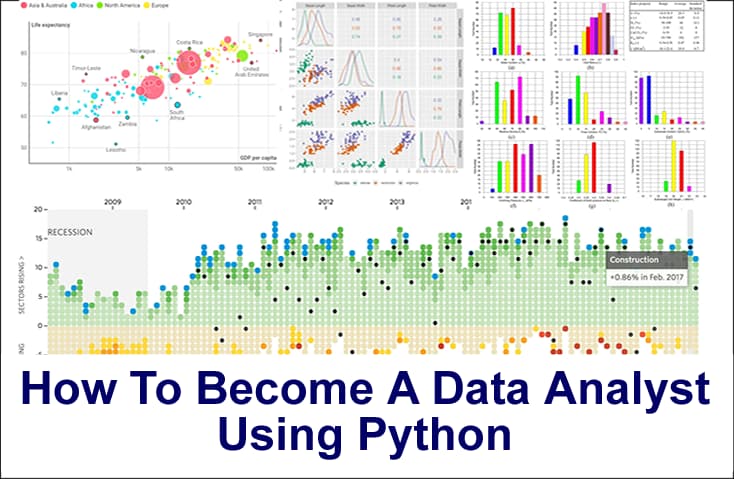Python has emerged as a cornerstone programming language in the realm of data analysis, owing to its versatility, user-friendly nature, and extensive range of libraries tailored specifically for data manipulation, visualization, and analysis tasks. Below are some key Python skills that data analysts should prioritize:
Foundational Python Programming: A solid understanding of basic Python syntax, data types, control structures, functions, and object-oriented programming principles lays the groundwork for effective data analysis in Python.
NumPy: NumPy serves as a foundational package for scientific computing, offering support for handling large multidimensional arrays and matrices, alongside a comprehensive suite of mathematical functions designed for array operations.
Pandas: Pandas is renowned for its prowess in data manipulation and analysis. Featuring versatile data structures like DataFrames and Series, Pandas simplifies tasks such as data filtering, grouping, joining, and reshaping, facilitating efficient data wrangling processes.
Matplotlib and Seaborn: Matplotlib stands as a versatile visualization library, empowering users to create a diverse array of static, interactive, and animated visualizations. Seaborn, built atop Matplotlib, provides a higher-level interface for generating aesthetically pleasing statistical graphics.
Scikit-learn: As a premier machine learning library, Scikit-learn equips data analysts with a suite of tools for building predictive models, conducting clustering and classification analyses, and evaluating model performance metrics.
Jupyter Notebooks: Jupyter Notebooks offer an interactive computing environment, allowing users to craft documents that seamlessly integrate live code, mathematical equations, visualizations, and explanatory text. Widely embraced for exploratory data analysis and knowledge sharing, Jupyter Notebooks facilitate collaborative data-centric workflows.
SQLAlchemy: For interfacing with relational databases using Python, SQLAlchemy furnishes a powerful toolkit and Object-Relational Mapping (ORM) framework, streamlining database interactions and enhancing data accessibility and management capabilities.
Regular Expressions: Regular expressions, or regex, serve as indispensable tools for pattern matching and text processing endeavors. Leveraged for tasks such as data extraction and cleaning, regex empowers analysts to efficiently parse and manipulate textual data.
Additional Data Visualization Libraries: Beyond Matplotlib and Seaborn, data analysts may explore supplementary visualization libraries like Plotly, Bokeh, or Altair to craft interactive and visually compelling data representations.
Web Scraping: Proficiency in web scraping techniques utilizing libraries such as BeautifulSoup or Scrapy enables analysts to gather data from online sources for subsequent analysis and insights extraction.




0 Comments